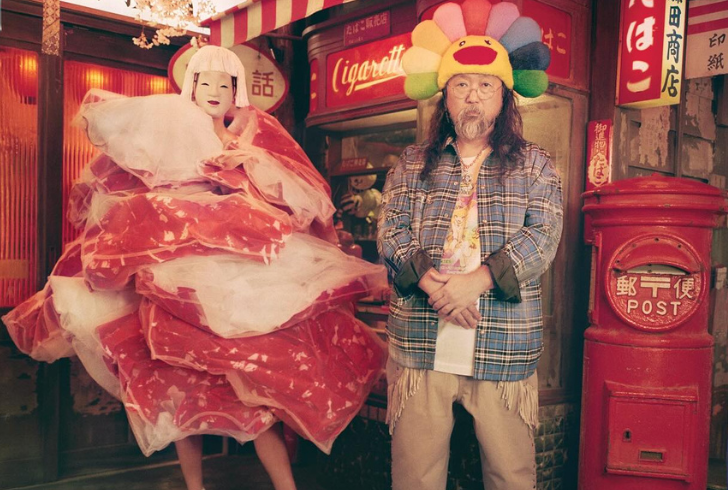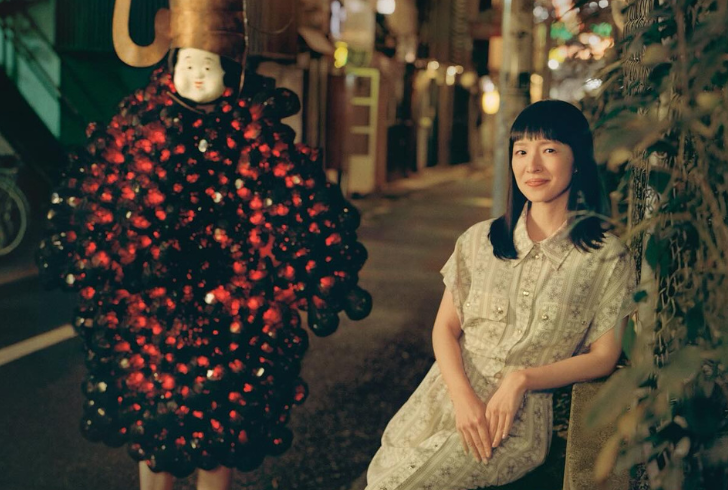Japan’s Cultural Icons Featured on T Magazine Covers
Japan’s global cultural impact is getting a spotlight like never before in T Magazine’s latest Culture issue. Featuring five unique covers, the edition celebrates six standout figures from Japan, including one legendary monster. From influential artists and architects to a globally recognized tidying consultant, these individuals represent the creativity and evolution of modern Japanese influence.
The featured personalities not only showcase excellence in their fields but also challenge how the world sees art, fashion, and lifestyle, and each one gets their moment on a cover that captures the essence of their work.
Visual Artists Who Redefine Expression
Takashi Murakami
Takashi Murakami, now in his early sixties, is one of Japan’s most recognizable contemporary artists. His work isn’t limited to gallery walls — it appears on fashion, toys, trading cards, and even music visuals. Known for creating the “Superflat” art style, Murakami merges Japanese pop culture with fine art techniques. His background in classical Japanese painting is still evident in his modern pieces.
Currently, two exhibitions showcase his diverse skills. At Gagosian in New York, he presents new works influenced by Utagawa Hiroshige’s “100 Famous Views of Edo.” Meanwhile, “Takashi Murakami: Stepping on the Tail of a Rainbow” at the Cleveland Museum of Art features his full-scale reimagining of the Yumedono — an eighth-century spiritual structure. These covers of cultural expression reflect both history and contemporary relevance.

Instagram | tmagazine | A leading Japanese contemporary artist in his early sixties, Takashi Murakami’s art spans galleries to popular culture.
Yasumasa Morimura
Yasumasa Morimura pushes boundaries by inserting himself into historic artworks and pop culture. Through costume, makeup, and digital edits, he reconstructs iconic figures like Frida Kahlo and Vincent van Gogh. His work doesn’t aim to merge Eastern and Western aesthetics; instead, he places them side by side, questioning identity, colonization, and perception.
He once noted that he’s not trying to combine cultural backgrounds, but to contrast them intentionally. Currently, his photographs are part of “Masquerades,” a joint exhibition with Cindy Sherman at the M+ Museum in Hong Kong.
Architects Reshaping Modern Spaces
Kazuyo Sejima and Ryue Nishizawa
When Kazuyo Sejima launched her own firm in 1987, she already had experience under renowned architect Toyo Ito. Soon after, she began working with Ryue Nishizawa, and the duo formed SANAA in 1995. Since then, they’ve become known for designing buildings that are both functional and visually open, often using reflective glass and minimal forms to great effect.
Their work includes museums like the 21st Century Museum of Contemporary Art in Kanazawa and the New Museum in New York. They’ve even contributed to the Louvre-Lens in France. Their style avoids hard edges and instead favors soft transitions and clean lines — a signature that earned them the Pritzker Prize in 2010. Sejima became only the second woman to win it, and Nishizawa the youngest ever at the time.
A Master of Cultural Collage
Tadanori Yokoo
Tadanori Yokoo made his name in the 1960s with psychedelic designs for global music legends like The Beatles and Santana. But it wasn’t until the 1980s that he moved into fine art after being inspired by a Picasso exhibition in New York.
Now 88, Yokoo continues to create in his Tokyo studio, producing collages, oil paintings, and prints that blend abstract shapes with clear figures. His work often incorporates elements from both Western and Asian art traditions. Currently, he has a solo exhibition running at the Setagaya Art Museum through June 22, and a full monograph of his work is due next year. His cover design for this cultural feature includes Japanese kaiju, including a bold nod to Godzilla, showcasing the playful yet serious tone he’s maintained throughout his career.
A Lifestyle Icon With a Lasting Message
Marie Kondo

Instagram | tmagazine | Marie Kondo sparked a tidying revolution with her “joy” philosophy, long before Netflix fame.
Long before her Netflix series made her a household name, Marie Kondo had a passion for organizing. She began her tidying business while still in college and published “The Life-Changing Magic of Tidying Up” in 2010. The book, now translated into over 40 languages, introduced the philosophy of only keeping things that “spark joy.”
Her approach isn’t about minimalism for aesthetic purposes but about mindful living. After experiencing exhaustion during one intense organizing session, she found herself drawn to objects that gave off what she described as a personal glow — a sign that those things were worth holding on to. Now based in Los Angeles, her influence is felt worldwide through shows, books, and online content, all of which are covered with thoughtful clarity and personal meaning.
A Cover Story That Celebrates More Than Just Faces
These five covers go beyond portraits. They tell visual stories about innovation, tradition, and artistic influence. Shot by photographer Piczo across night-lit Tokyo locations, each cover features carefully curated styling, including traditional Japanese Noh theater masks and designs from top local fashion houses. Together, they merge the ancient with the contemporary.
Whether through Murakami’s colorful visuals, Kondo’s structured serenity, or Morimura’s layered identities, each subject brings a fresh lens to Japanese culture. These figures challenge perceptions, not just within Japan but worldwide, reshaping how creativity, order, and self-expression are portrayed in global art and design circles.